
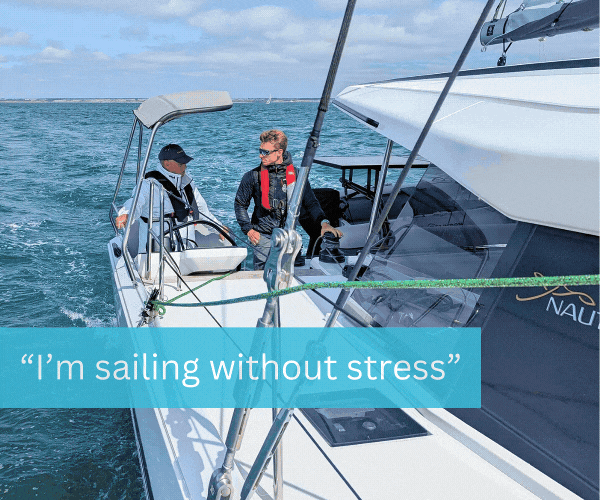


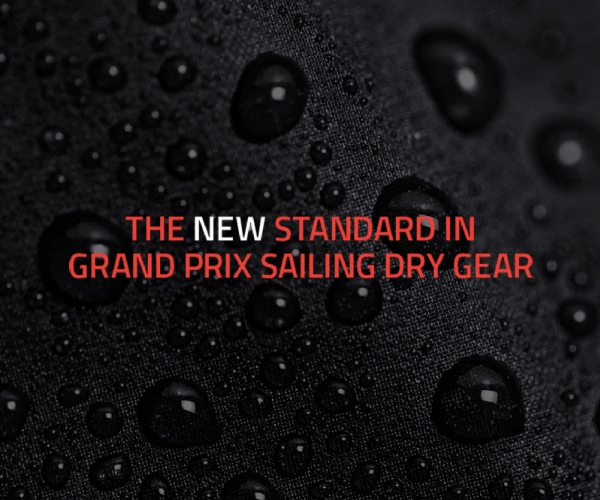

-(1)-202408140552.gif)
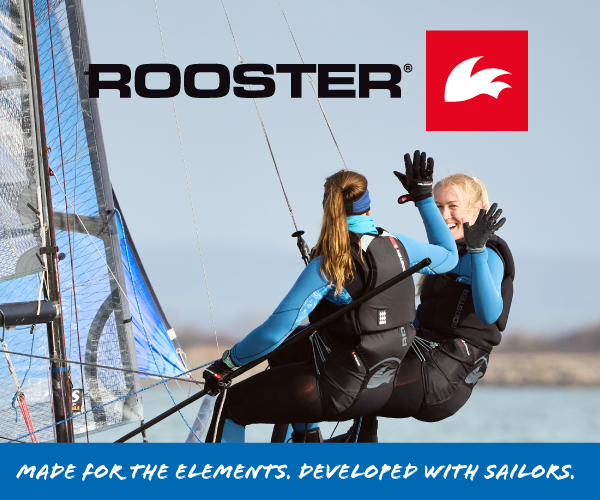





Boats for sale
| Rossiter Pintail Mortagne sur Gironde, near Bordeaux |
 |
| Laser 28 - Excellent example of this great design Hamble le rice |
 |
| Laser 140101 Tynemouth |
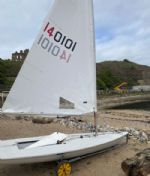 |
List classes of boat for sale |
What does the kicker do? |
Post Reply 
|
Page 123 4> |
| Author | |
dohertpk 
Posting king 
Joined: 28 Sep 12 Online Status: Offline Posts: 172 |
 Post Options Post Options
 Quote Quote  Reply Reply
 Topic: What does the kicker do? Topic: What does the kicker do?Posted: 13 May 14 at 7:43pm |
|
Hi all,
More input from the hive mind requested please. My understanding of what a kicker does lacks nuance. I've basically been using the kicker on my 600 as a 'go button'. I have two questions; 1) how does the kicker affect sail shape and 2) how does the kicker's effect on sail shape influence the boat's performance at different wind strengths? Many thanks for your continued patience with newbie questions! Peter
|
|
 |
|
Rupert 
Really should get out more 
Joined: 11 Aug 04 Location: Whitefriars sc Online Status: Offline Posts: 8956 |
 Post Options Post Options
 Quote Quote  Reply Reply
 Posted: 13 May 14 at 7:57pm Posted: 13 May 14 at 7:57pm |
|
It does depend upon the type of boat, but the main thing it does on most boats is flatten the sail by bending the mast. It also closes the roach, which, I suspect on the 600 is the most important role.
There are sailors of 600's and similar boats on here who will be able to expand on things, but it is possible to write reams on the subject (I have done for other boats elsewhere in the past. Best is to have someone who knows the boat demonstrate it in person. Failing that, play with the kicker and other controls on the shore. See what happens when looking at the boat from behind when you pull the kicker on. Then pull the cunningham on and see how it changes it again. Those 2 controls working together will totally alter the shape of the sail. Getting the shape right for the weather and direction is then the next step. |
|
|
Firefly 2324, Puffin 229, Minisail 3446 Mirror 70686
|
|
 |
|
Rupert 
Really should get out more 
Joined: 11 Aug 04 Location: Whitefriars sc Online Status: Offline Posts: 8956 |
 Post Options Post Options
 Quote Quote  Reply Reply
 Posted: 13 May 14 at 8:00pm Posted: 13 May 14 at 8:00pm |
|
Firefly 2324, Puffin 229, Minisail 3446 Mirror 70686
|
|
 |
|
iGRF 
Really should get out more 
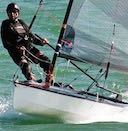
Joined: 07 Mar 11 Location: Hythe Online Status: Offline Posts: 6499 |
 Post Options Post Options
 Quote Quote  Reply Reply
 Posted: 13 May 14 at 8:01pm Posted: 13 May 14 at 8:01pm |
|
anyone care to join me?

|
|
 |
|
Bootscooter 
Really should get out more 

Joined: 15 May 07 Location: United Kingdom Online Status: Offline Posts: 1094 |
 Post Options Post Options
 Quote Quote  Reply Reply
 Posted: 13 May 14 at 8:10pm Posted: 13 May 14 at 8:10pm |
|
Hi Peter,
This is a massive subject, so what I'd suggest you do first is to rig your boat, turn it on it's side (on a flat area) and prop the top of the mast up on a chair or something so it is horizontal. Then get some very lightweight plastic balls (like those in a ball-pit for kids) and put them on the sail (with the boom sheeted all the way in. What you can do now is play with the outhaul, Cunningham and kicker and see exactly what happens to the deepest part of the sail for yourself. Others will be along shortly to go in to far greater depth, but in very (VERY) simplistic terms you want to work out what makes; A) a flat(ish) sail B) a full (or deep) sail In very light winds you want a flat(ish) sail so that the air flowing over it doesn't have a massive change in direction to make. In medium wind you want more power, and this comes from having a fuller sail. In strong winds you need to de-power, and you do this by flattening the sail. You will get a flatter sail by tightening the 3 sail shape controllers, and they all work together, so pulling on one will need you to adjust the others also. For example, with the balls in place on your sail, pull on the kicker.... the sail will flatten a bit, the leach of the sail will lift and the deepest part of the sail will move aft. This movement aft is not really a good thing as it will induce weather helm (the boat feeling like it wants to turn in to wind). Without adjusting the kicker from this hard-on (fnarr!!) position, now also pull on the Cunningham (downhaul). You'll see the balls roll forward on the sail as the deepest part moves back to a position close to being in line with the daggerboard. This is all very simplistic, but will give you a good visual clue as to what's going with your controls.... the rest is going to be about reading up then playing to see what works for you. Massive apologies if this comes across as an egg-sucking lesson - not meant that way at all. |
|
 |
|
dohertpk 
Posting king 
Joined: 28 Sep 12 Online Status: Offline Posts: 172 |
 Post Options Post Options
 Quote Quote  Reply Reply
 Posted: 13 May 14 at 8:37pm Posted: 13 May 14 at 8:37pm |
|
Many thanks all for your replies - I'd been struggling to understand how the kicker can act as a 'powering up' instrument up to a certain wind strength, and a 'de-powering tool' when 'fresh to frightening'. The sail and balls exercise sounds very useful - I'll certainly give it a try next time I get the chance.
|
|
 |
|
NickA 
Really should get out more 
Joined: 30 Mar 05 Location: United Kingdom Online Status: Offline Posts: 784 |
 Post Options Post Options
 Quote Quote  Reply Reply
 Posted: 13 May 14 at 9:41pm Posted: 13 May 14 at 9:41pm |
|
Confusing isn't it.
On a stiff masted boat (my old laser 2 fun) all it does is make the sail less twisted, giving more power (ie shedding less power off the top of the sail). Though twist is useful if there is more wind high up (eg when the wind is light).
BUT on a bendy masted boat it flattens the sail making it simultaneously less powerful and more streamlined, so able to point higher. Boats like your 600 and my Javelin have bendy masts whose stiffness can be controlled by lowers / rams so you can dial in the effect of the kicker. No ram / slack lowers means the kicker mostly bends the mast. Lots of ram / tight lowers means the kicker brings the leach in, without bending the mast. If you're in the habit of tensioning the leach (and bending the mast) with the main sheet, then the kicker stops the sail powering up when you sheet out - which is also useful in strong wind and provides a secondary de-powering effect. Anyway, best add the tension in the lowers to that list of things to alter whilst balancing balls on your sail. Just to add to the confusion; when I had a go on an RS700 I complained that it kept trying to head up; upon which the experts told me to put MORE kicker on; which worked .. and I've no idea why. |
|
|
Javelin 558
Contender 2574 |
|
 |
|
Jeepers 
Posting king 
Joined: 26 May 11 Location: Hamphire Online Status: Offline Posts: 147 |
 Post Options Post Options
 Quote Quote  Reply Reply
 Posted: 13 May 14 at 11:06pm Posted: 13 May 14 at 11:06pm |
|
Basically, hauling on kicker beyond mainsheet tension bends the mast, which flattens the main, opens the leach, depowers the sail. Spreader settings, mast rams, and lowers, that restrict the impact of the boom pushing into the mast and thus bending it, transfers the kicker pressure into the leach, tensions the leech, powers the sail up, and improves pointing - in moderate breezes only. This is general - best check out specifics with class experts.
|
|
 |
|
craiggo 
Really should get out more 

Joined: 01 Apr 04 Location: United Kingdom Online Status: Offline Posts: 1810 |
 Post Options Post Options
 Quote Quote  Reply Reply
 Posted: 13 May 14 at 11:17pm Posted: 13 May 14 at 11:17pm |
|
RS600 doesn't have lowers and in comparison to the 700 has a very stiff mast. As a result the primary use of the kicker is to hold power in the main by stopping the leech from opening. For light winds the kicker needs to be eased and leech tension held only with the mainsheet. This is because the kicker as well as tightening the leech also bends the mast and as a result the effect of the two is for the upper leech to 'hook' to windward. This stalls the top of the sail losing vital power. On the 600 as soon as you have enough breeze to either hike off the racks or trapeze you will need to be winding on the kicker to hold the leech as letting it fall away will allow it to feather into wind and give you no drive. It's this point at which pulling on kicker in a 600 feels like a power switch. If you are hiking when you pull on the kicker the boost in power will see you leaping out onto the wire. If you are already on the wire, then you'll need to ease a bit of sheet or pinch as you squeeze the kicker on.
Progressively as it gets windier you will need to pull more on. On the 600 when you hoist the main with kicker fully off it should go pretty taught with the main fully up. In a F3-5 you will need to pull kicker on block to block (really, pull it until the floating block in the cascade hits the bottom block) upwind. For reaches it only needs minimal easing but will need to be fully eased down the run. When it gets super windy, you will not be able to hook the main due to the load, so you are looking to twist the top into wind. This may require a slight ease of the kicker, with a lot of cunningham. Edited by craiggo - 13 May 14 at 11:18pm |
|
 |
|
tgruitt 
Really should get out more 

Joined: 02 Dec 04 Online Status: Offline Posts: 2479 |
 Post Options Post Options
 Quote Quote  Reply Reply
 Posted: 14 May 14 at 11:04am Posted: 14 May 14 at 11:04am |
|
Well done everyone, good explanations and no stupid comments!
|
|
|
Needs to sail more...
|
|
 |
|
Post Reply 
|
Page 123 4> |
| Forum Jump | Forum Permissions  You cannot post new topics in this forum You cannot reply to topics in this forum You cannot delete your posts in this forum You cannot edit your posts in this forum You cannot create polls in this forum You cannot vote in polls in this forum |
Bulletin Board Software by Web Wiz Forums® version 9.665y
Copyright ©2001-2010 Web Wiz
Change your personal settings, or read our privacy policy
Copyright ©2001-2010 Web Wiz
Change your personal settings, or read our privacy policy











 Printable Version
Printable Version Delicious
Delicious Digg
Digg Facebook
Facebook Furl
Furl Google
Google MySpace
MySpace Newsvine
Newsvine reddit
reddit StumbleUpon
StumbleUpon Twitter
Twitter Windows Live
Windows Live Yahoo Bookmarks
Yahoo Bookmarks Topic Options
Topic Options